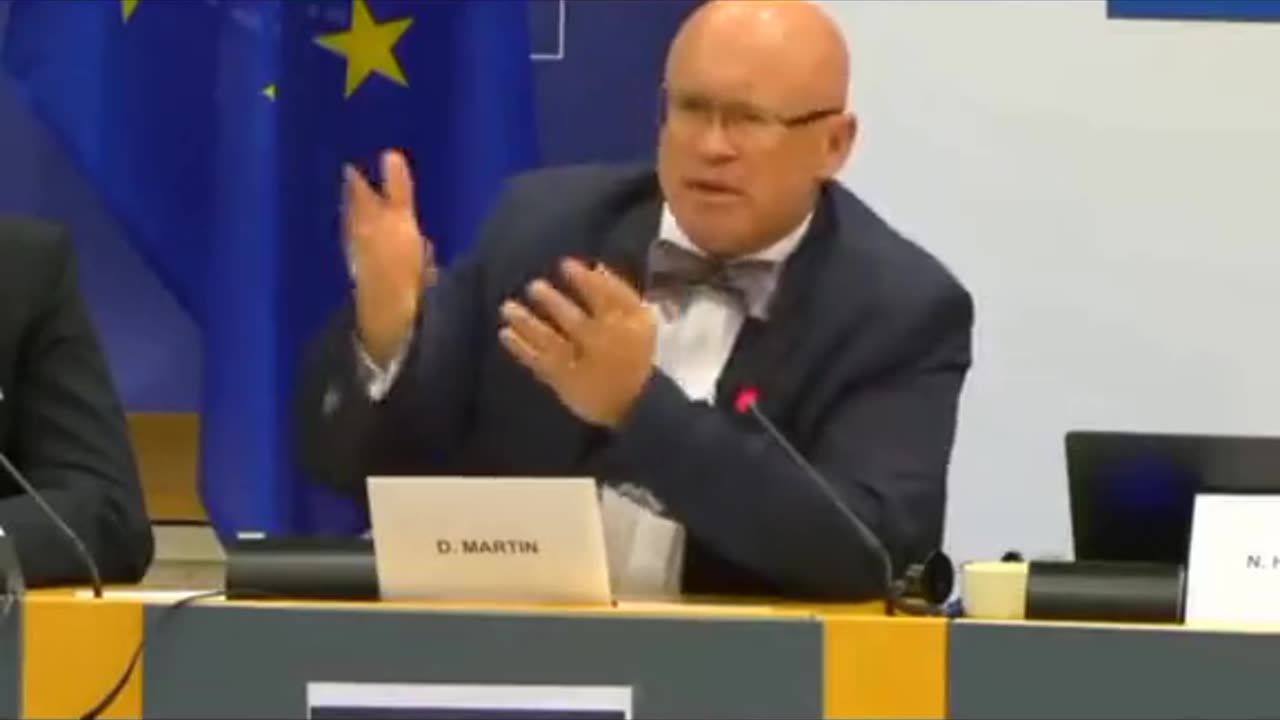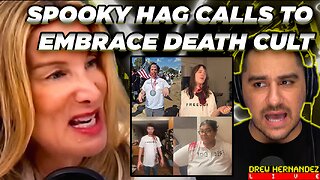Premium Only Content

Vaccine Development of the 1st Corona Virus was in 1967
David Martin, a financial analyst said this during a presentation at the International COVID Summit III on May 3, 2023:
Most of you don't know that coronavirus as a model of a pathogen was isolated in 1965. Coronavirus was identified in 1965 as one of the first infectious replicatable viral models that could be used to modify a series of other experiences of the human condition. It was isolated once upon a time associated with the common cold. But what's particularly interesting about its isolation in 1965 was that it was immediately identified as a pathogen that could be used and modified for a whole host of reasons. And you heard me correctly, that was 1965. And by the way, these slides are public domain.
You're welcome to look at every single reference. Every comment that I made is based on published material, so do make sure that you look at those references. But in 1966, the very first COV coronavirus model was used as a transatlantic biological experiment in human manipulation. And you heard the date, 1966. I hope you're getting the point of what I'm saying. This is not an overnight thing.
This is actually something that's been long in the making. A year before I was born, we had the first transatlantic coronavirus data sharing experiment between the United States and the United Kingdom. And in 1967, the year I was born, we did the first human trials on inoculating people with modified coronavirus. Isn't that amazing? 56 years ago, the overnight success of a pathogen that's been 56 years in engineering. And I want that to chill with all of you.
Where were we when we actually allowed, in violation of biological... weapons treaties, where were we as a human civilization when we thought it was an acceptable thing to do to take a pathogen for the United States and infect the world with it? Where was that conversation? And what should have been that conversation in 1967? That conversation wasn't had. Ironically, the common cold was turned into a chimera in the 1970s.
And in 1975, 1976, and 1977, we started figuring out how to modify coronavirus by putting it into different animals, pigs and dogs. And not surprisingly, by the time we got to 1990, we found out that coronavirus as a infectious agent was an industrial problem for two primary industries, the industries of dogs and pigs. Dog breeders and pigs found that coronavirus created gastrointestinal problems and that became the basis for Pfizer's first spike protein vaccine patent filed, are you ready for this, in 1990. Did you hear what I just said? 1990. Operation Warp Speed?
I'm sorry, where's the warp and the speed? Pfizer, 1990, the very first spike protein vaccine for coronavirus. Isn't that fascinating? Isn't it fascinating that we were told that, well, the spike protein is a new thing. We just found out that that's the problem.
No.
As a matter of fact, we didn't just find out it was not just now the problem. We found that out in 1990 and filed the first patents on vaccines in 1990 for the spike protein of coronavirus. And who would have thought five, six, Clearly the innocent organization that does nothing but promote human health. Clearly Pfizer. The organization that has not bought the votes in this chamber, in every chamber of every government around the world.
Not that Pfizer. Certainly they wouldn't have had anything to do with this. But oh yes they did. And in 1990 they found out that there was a problem with vaccines. They didn't work. You know why they didn't work?
It turns out that coronavirus is a very malleable model. It transforms and it changes and it mutates over time. As a matter of fact, every publication on vaccines for coronavirus from 1990 until 2018, every single publication concluded that coronavirus escapes the vaccine impulse because it modifies and mutates too quickly for vaccines to be effective. And since 1990 to 2018, that is the published science, ladies and gentlemen. That's following the science. Following the science is their own indictment of their own programs that said it doesn't work.
And there are thousands of publications to that effect, not a few hundred. and not paid for by pharmaceutical companies. These are publications that are independent scientific research that shows unequivocally, including efforts of the chimera modifications made by Ralph Baric and the University of North Carolina Chapel Hill. All of them show vaccines do not work on coronavirus. That's the science. And that science has never been disputed.
But then we had an interesting development in 2008. And this date is most important. Because in 2002, the University of North Carolina Chapel Hill patented, and I quote, an infectious replication defective clone of coronavirus. Listen to those words, infectious replication defective. What does that phrase actually mean? For those of you not familiar with language, let me unpack it for you.
Infectious replication defective means a weapon. It means something meant to target an individual but not have collateral damage to other individuals. That's what infectious replication defective means. And that patent was filed in 2002 on work funded by NIAID's Anthony Fauci from 1999 to 2002. And that work, patented at the University of North Carolina Chapel Hill, mysteriously preceded SARS 1 .0 by a year. Dave, are you suggesting that SARS 1 .0 wasn't from a wet market in Wuhan?
Are you suggesting it might have come from a laboratory? in the University of North Carolina Chapel Hill? No, I'm not suggesting it. I'm telling you that's the facts. We engineered SARS. SARS is not a naturally occurring phenomenon.
The naturally occurring phenomenon is called the common cold. It's called influenza -like illness. It's called gastroenteritis. That's the naturally occurring coronavirus. SARS is the research developed by humans weaponizing a life system model to actually attack human beings. And they patented it in 2002.
-
 2:34:30
2:34:30
Red Pill News
4 hours agoBoomerang Time - DOJ Investigating BLM Fraud on Red Pill News Live
14.7K8 -
 1:46:14
1:46:14
Roseanne Barr
5 hours ago“The Over Emotional Are Always Under Informed” | The Roseanne Barr Podcast #121
62.9K36 -

Nerdrotic
6 hours ago $7.51 earnedThe WitcHER DOA | Box Office Massacre | Massive Industry Layoffs - Friday Night Tights 378
27.2K5 -
 14:54
14:54
IsaacButterfield
14 hours ago $2.14 earnedShe Called Out “Creepy Men It Didn’t End Well
20.7K40 -
 11:43:21
11:43:21
LFA TV
22 hours agoLIVE & BREAKING NEWS! | FRIDAY 10/31/25
187K46 -
 1:08:42
1:08:42
vivafrei
5 hours agoEric Swalwell in Trouble Again? RFK Jr. "Reverses Course" on Tylenol & Autism? Arctic Frost & MORE!
76K35 -
 1:19:51
1:19:51
DeVory Darkins
6 hours agoNewsom EXPOSED after latest bombshell and Democrats pulls shocking stunt regarding shutdown
79.2K37 -
 25:29
25:29
Stephen Gardner
5 hours ago💣 Trump White House UNEXPECTED Move + Thune DESTROYS Schumer on Senate Floor!!
32.8K31 -
 3:31:15
3:31:15
Drew Hernandez
16 hours agoSPOOKY WOKE HAG CALLS FOR DEMS TO EMBRACE CELEBRATING EXECUTION OF CHARLIE KIRK?!
19.1K14 -
![MAHA News [10.31] - HHS Coup, Big Food Documentary, SNAP Scams, Microplastic Solutions](https://1a-1791.com/video/fwe2/d9/s8/1/w/q/m/v/wqmvz.0kob-small-MAHA-News-10.31.jpg) 1:28:13
1:28:13
Badlands Media
18 hours agoMAHA News [10.31] - HHS Coup, Big Food Documentary, SNAP Scams, Microplastic Solutions
26.3K10